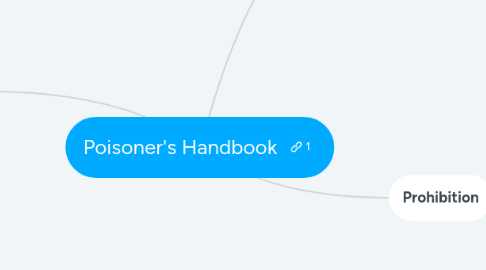
1. Types of poisons
1.1. Chloroform (CHCl3)
1.1.1. In 1915 it had a different connotation than it does now. It was not used to knock people out, rather it was used by robbers to silently kill the residents of the homes they robbed. They had a very limited idea of it at the time and even though experiments were done, they could not positively identify it in the body.
1.2. Wood Alcohol (CH3OH)
1.2.1. In 1918-1919, Norris and Gettler began to investigate wood alcohol more. The government was beginning to put it in alcohol to deter bootleggers but it blinded them, made them ill, and even killed them. This caused a huge problem and caused many chemists to try and help remove the lethal element of the poison to help save lives.
1.3. Cyanides (HCN, KCN, NaCN)
1.3.1. Cyanide became more prominent in 1920-1922 and the case of the Jackson's was the first examined by Norris. The poison was different than others leaving the couple dead with frothing at the mouth and red liver spots, later found to be a result of the poisons ability shut done the ability to carry or absorb oxygen.
1.4. Arsenic (As)
1.4.1. Arsenic became a common poison to use because of the ease of finding it at the time as well as its subtle taste. However, after time it became easy for investigators to identify because of its metallic element. I would take longer to break down and could be seen for as long as decades in the corpse.
1.5. Mercury (Hg)
1.5.1. When more mercury poisoning cases appeared Gettler was able to contribute many insights. Although mercury was a messy killer and easy to identify with lots of internal blood and plenty of other indicators. He was able to find even mere traces that left less of mess.
1.6. Carbon Monoxide (CO)
1.6.1. Carbon monoxide poisoning resulted in numerous deaths throughout the 20s (estimated a thousand per year) that for a while went unidentified. It was typically used in murders that were made to look like accidents. It worked by suffoactiing victims by depleating them of oxygen until there was none left.
1.7. Methyl Alcohol (CH3OH)
1.7.1. Methyl alcohol was also used by the government during prohibition to try and deter bootleggers. It was different because it didn't feel like a poison, rather it had the effects of alcohol with an initial buzz, dizziness and nausea, and then an overwhelming urge to sleep that killed them.
1.8. Radium (Ra)
1.8.1. Radium was initially thought to be a miracle element. It was used for a variety of things and after investigating the deaths of dial painters was found to be the source of horrendous deaths. The radiation in it was quickly found to be lethal if not long term detrimental o one's health.
1.9. Ethyl Alcohol (C3H5OH)
1.9.1. As another result of prohibition ethyl alcohol poisoning became more prominent with distinctive dilated pupils, brain and internal bleeding in victims. Gettler found that it had to do with alcohol levels in the blood and brain.
1.10. Thallium (Tl)
1.10.1. Thallium was another element commonly used in everyday objects that resulted in many deaths. They were more gradual and painful. Eventually Gettler was able to determine a test to positively or negatively identify the presence of the poison in the body.
2. History of forensic investigation
2.1. In 1918, New York City's medical examiner system was in disarray. They had numerous unsolved cases and several scandals with corrupt coroners. As a result, they hired Charles Norris. With the help of Alexander Gettler, they founded the first-ever toxicology laboratory leading the world into a new age of forensic investigation.
2.1.1. Corners required no qualifications and were paid per body causing a lot of corruption in the system. Bribes were often taken to hide up the true nature of a death.
2.1.1.1. Charles Norris was the first trained medical examiner who aimed to have a "medical justice system" that was science-based and free of corruption. The mayor at the time was not a fan of that because he wanted a ME that would do what he wanted.
2.1.2. Although Norris and Gettler had used toxicology to solve many cases they hardly got recognition and were often shunned by the police in their efforts. Eventually, they were seen as less of a threat and more of an asset by the police. This lead to the eventual change in how we view forensics in investigations.
2.1.2.1. Some bigger cases like the clearing of Frank Travia got them some attention which helped them prove thair credibility.

